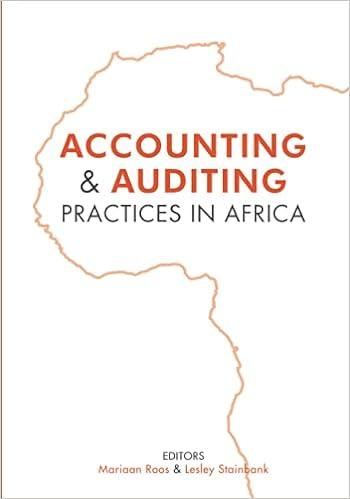Question
UBike is a bicycle manufacturer based in Japan. Haruki, the supply chain manager at Ubike is designing the manufacturing network and has selected four potential
UBike is a bicycle manufacturer based in Japan. Haruki, the supply chain manager at Ubike is designing the manufacturing network and has selected four potential sites - Toyko, Sapporo, Fukuoka, and Sendai. The below table shows the annual fixed costs at the four locations as well as the cost of producing and shipping a bicycle to each of the four markets. Note that plants could have a capacity of either 250,000 or 500,000 units and that each open plant should have at least 60% capacity utilisation.
Production and Transportation Costs ($/unit)
Tokyo Sapporo Fukuoka Sendai Annual Demand
Southwest 50 80 35 52 210,000
Northeast 65 35 70 40 150,000
Central 30 80 55 53 160,000
East 48 30 42 35 170,000
Annual fixed cost of 250,000 $8 million $6 million $7 million $7,4 million
Annual fixed cost of 500,000 $12 million $10 million $11 million $11.4 million
The following is my ILP model:
Let xij be the number of bicycles produced at plant i and shipped to market j (i = 1, 2, 3, 4; j = 1, 2, 3, 4)
Let x11 = the number of units produced at Tokyo plant and shipped to Southwest
Let x12 = the number of units produced at Tokyo plant and shipped to Northwest
Let x13 = the number of units produced at Tokyo plant and shipped to Central
Let x14 = the number of units produced at Tokyo plant and shipped to East
Let x21 = the number of units produced at Sapporo plant and shipped to Southwest
Let x22 = the number of units produced at Sapporo plant and shipped to Northwest
Let x23 = the number of units produced at Sapporo plant and shipped to Central
Let x24 = the number of units produced at Sapporo plant and shipped to East
Let x31 = the number of units produced at Fukuoka plant and shipped to Southwest
Let x32 = the number of units produced at Fukuoka plant and shipped to Northwest
Let x33 = the number of units produced at Fukuoka plant and shipped to Central
Let x34 = the number of units produced at Fukuoka plant and shipped to East
Let x41 = the number of units produced at Sendai plant and shipped to Southwest
Let x42 = the number of units produced at Sendai plant and shipped to Northwest
Let x43 = the number of units produced at Sendai plant and shipped to Central
Let x44 = the number of units produced at Sendai plant and shipped to East
yij is a binary variable indicating whether plant i is open to operate (1 if open, 0 otherwise)
Let y1 = Tokyo plant
Let y2 = Sapproro plant
Let y3 = Fukuoka plant
Let y4 = Sendai plant
Min. 8,000,000y1 + 12,000,000y1 + 6,000,000y2 + 10,000,000y2 + 7,000,000y3 + 11,000,000y3 + 7,400,000y4 + 11,400,000y4 + 50x11 + 65x12 + 30x13 + 48x14 + 80x21 + 35x22 + 80x23 + 30x24 + 35x31 + 70x32 + 55x33 + 42x34 + 52x41 + 40x42 + 53x43 + 35x44
Subject to
Demand constraint for each market
x11 + x21+ x31+ x41 = 210,000 (Demand for the Southwest market)
x12 + x22+ x32+ x42 = 150,000 (Demand for the Northwest market)
x13 + x23+ x33+ x43 = 160,000 (Demand for the Central market)
x14 + x24+ x34+ x44 = 170,000 (Demand for the East market)
Capacity constraint for each plant
x11 + x12+ x13+ x14
x21 + x22+ x23+ x24
x31 + x32+ x33+ x34
x41 + x42+ x43+ x44
60% plant utilisation constraint
x11 + x12+ x13+ x14 >= y1 x 60% (Utilisation constraint for the Toyko plant)
x21 + x22+ x23+ x24 >= y2 x 60% (Utilisation constraint for the Sapporo plant)
x31 + x32+ x33+ x34 >= y3 x 60% (Utilisation constraint for the Fukuoka plant)
x41 + x42+ x43+ x44 >= y4 x 60% (Utilisation constraint for the Sendai plant)
A plant can be either opened or closed
y11
y21
y31
y41
Non-negativity, where the number of units produced and shipped cannot be a negative amount
xij > 0 for all i and j
Binary constraint
yi = {0, 1} for all i
Need some guidance for both the model I set up and a rough visual explanation of how I should set it up on Excel cause I can't seem to get the Solver to solve it. Attached my Solver attempt for reference, please let me know how I should set it up in order for me to get an optimal solution!


Step by Step Solution
There are 3 Steps involved in it
Step: 1

Get Instant Access to Expert-Tailored Solutions
See step-by-step solutions with expert insights and AI powered tools for academic success
Step: 2

Step: 3

Ace Your Homework with AI
Get the answers you need in no time with our AI-driven, step-by-step assistance
Get Started


